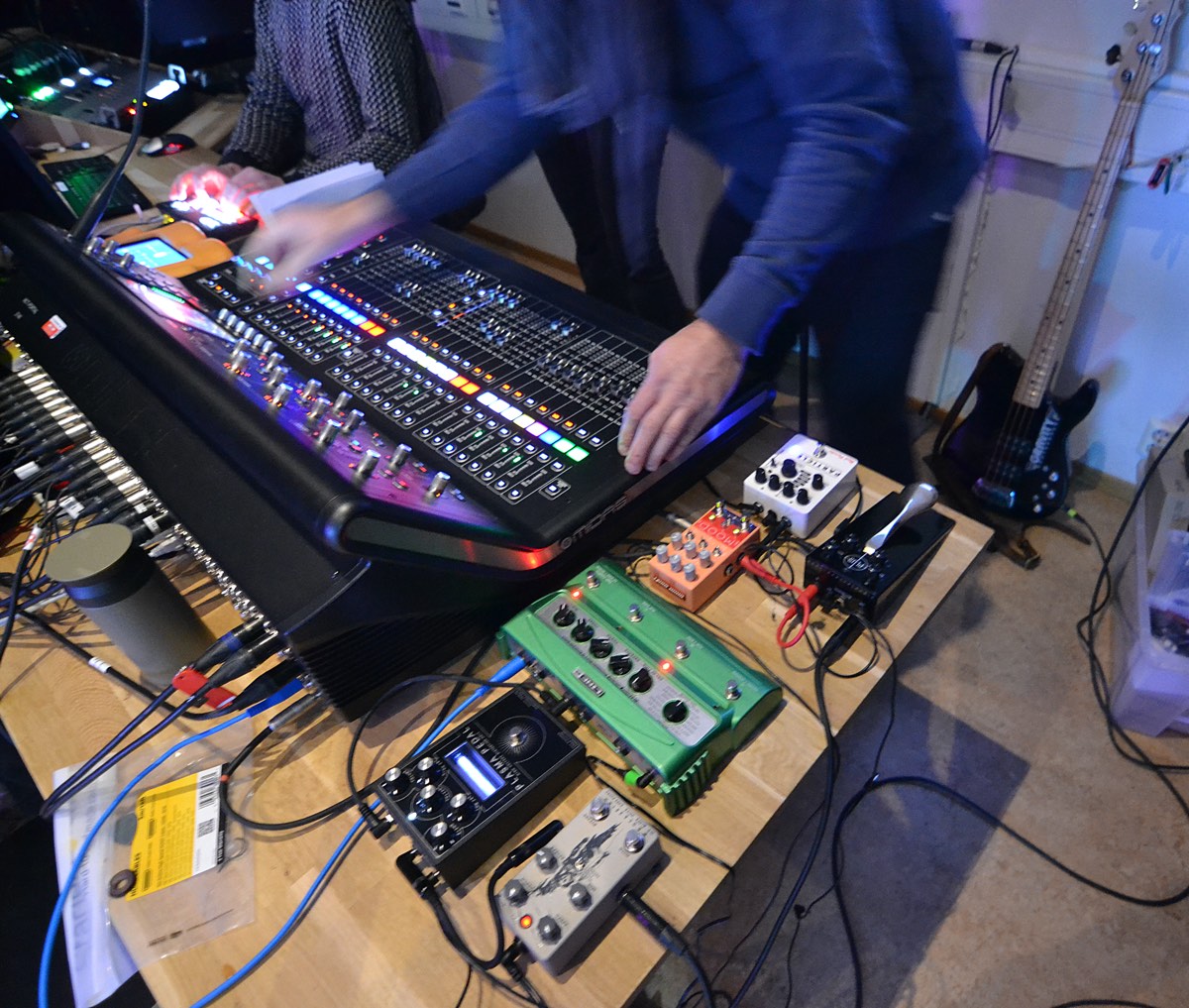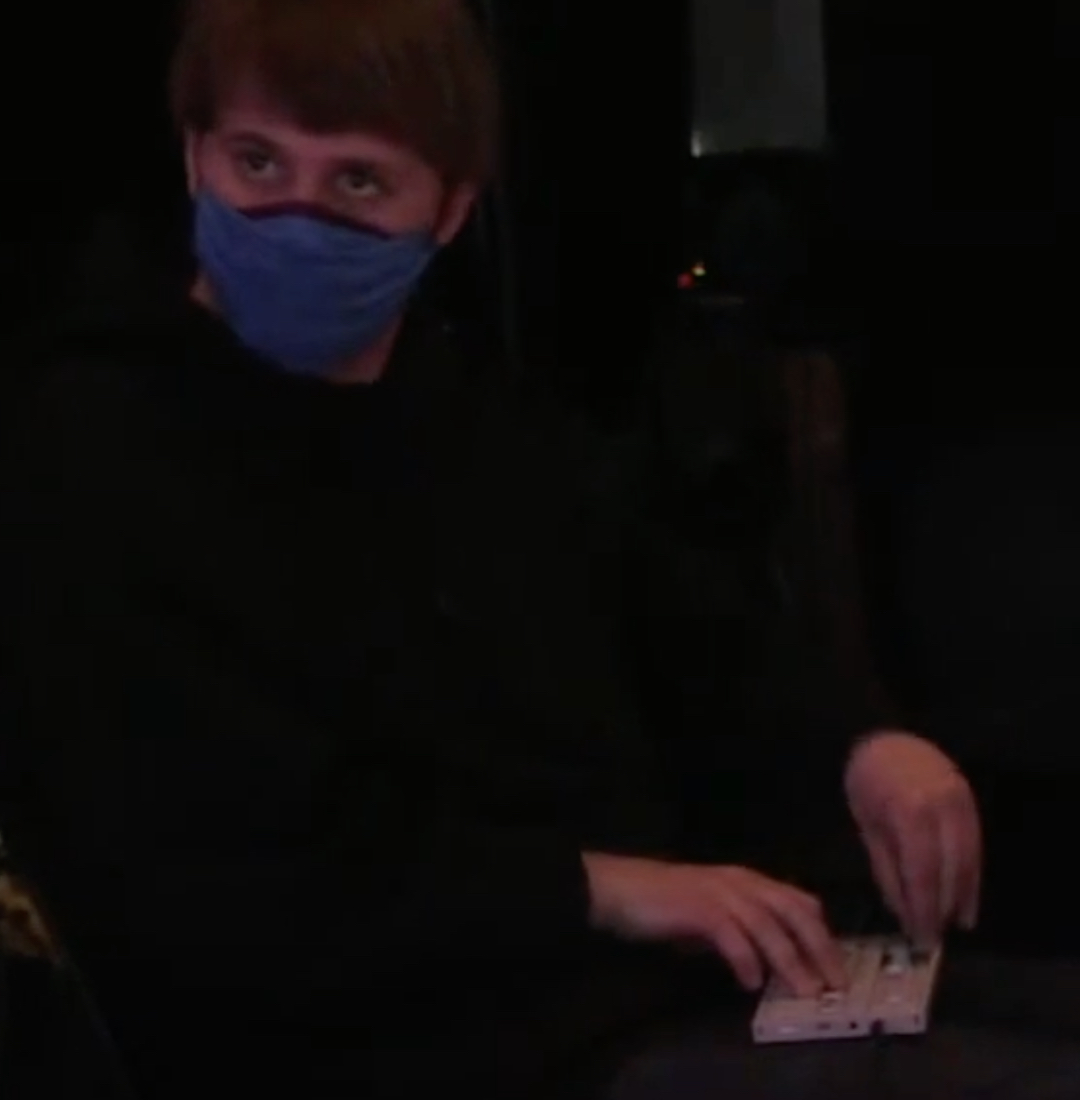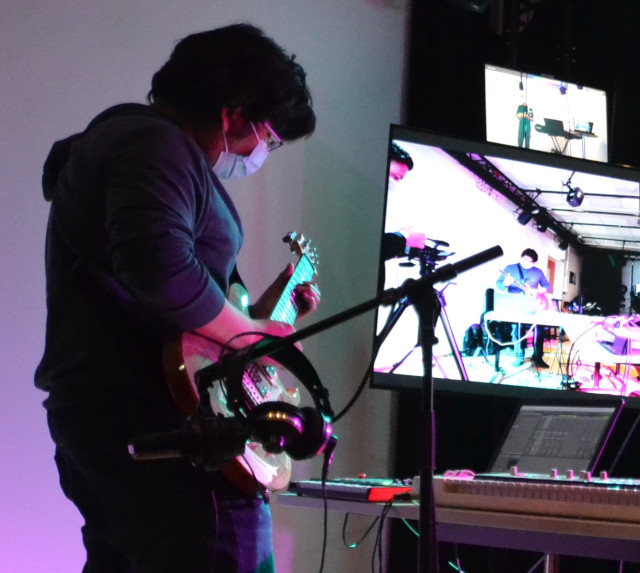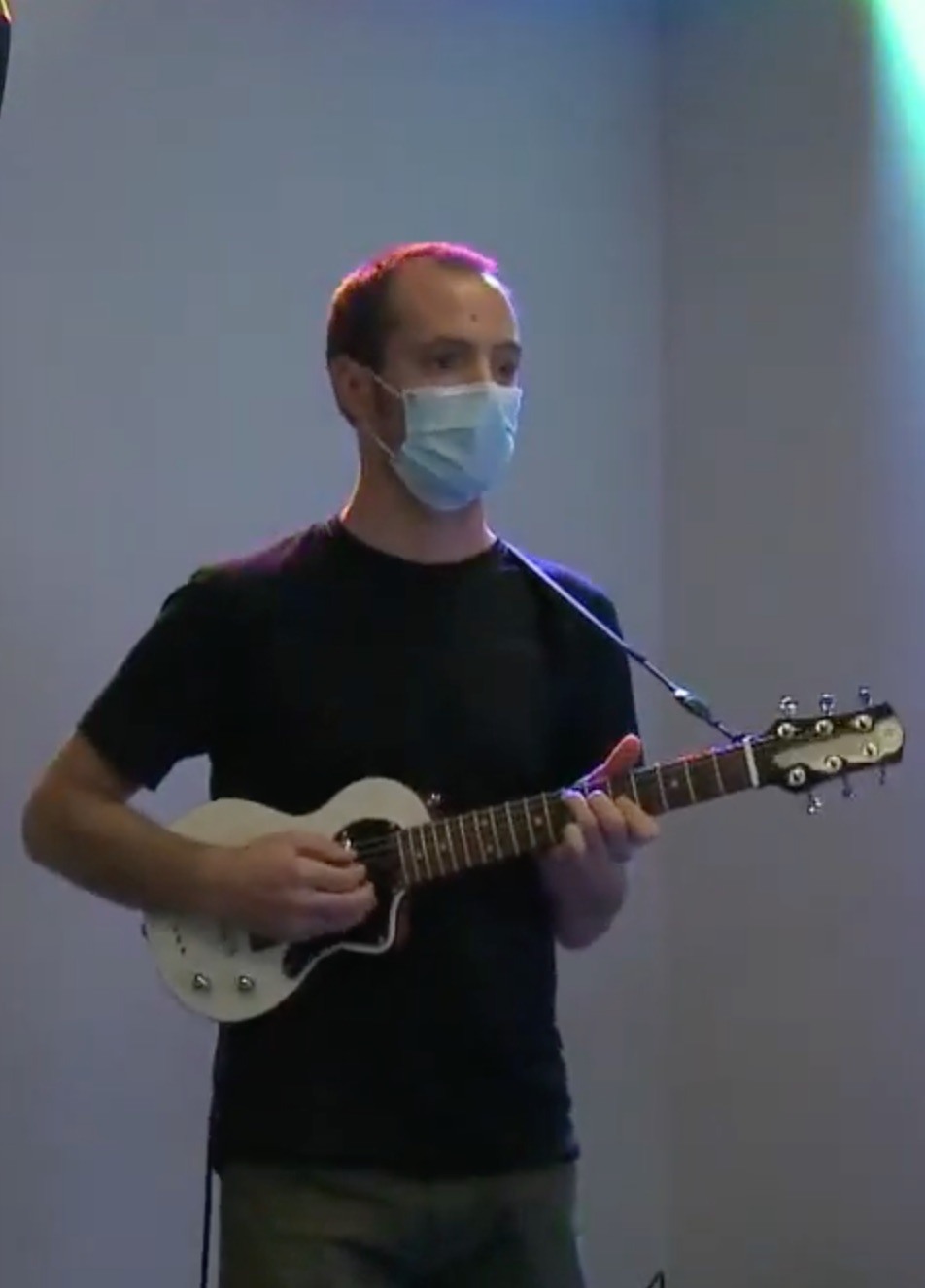Spring Concert 2021: Team B's Reflections
Introduction
For the grand finale of MCT4022 we, Team B, wanted to play something that should be slightly challenging and rewarding. Through the semester we have been doing improvisations in class, and when working in the Portal outside class, we’ve played things from real punk to Daft Punk. At one point in this semester’s class Henrik and Lindsay (he’s not Team B, but we like him anyway!) did an audio processing improvisation which was something we wanted to experiment with as a team. Anders, being a pedal virtuoso, was obviously given the main role of doing the processing. A role he was more happy with compared to being the lead singer of our Team B punk band. Willie, who presumably should have been born in the 16th century, suggested that we do a processing improvisation on J.S. Bach’s cello prelude in G.* And so we did.
(*Willie would have preferred 16th century music, but chose something modern like Bach instead so that no one would call him old fashioned.)
Live Performance
Anders’ Instrumentation
Being a pedal freak, I connected three pedals to aux 1 and three to aux 2 on the mixer. In the aux 1 loop I used a Chase Bliss Audio Mood -> Gamechanger Audio Plus, the latter with a Red Panda Particle in its own effect loop. Without going into too much detail, all three of them are able to sample and play back incoming signals (in very different ways), as well as having a blend function, making it possible to let signal through without being effected. In this loop I tapped signal from all of my teammates, one at a time.

In the other loop, I used the DL4 in looper mode, capturing Willie’s playing at the start and actually playing that part back throughout the performance. But with overdubs, ocassional reversed playback and everything being effected by the Gamechanger Audio Plasma (distortion) and the eternal-reverberation-able reverb with added tremolo/flanger/filter, the Procession from Old Blood Noise Endeavours, even beautiful played Bach can sound like noise. I routed the returns from the aux to separate channels (instead of back to the aux returns), to be able to sidechain my signal with Henriks OP-1 as source, but having to get our 15 minutes rehearsals down to 7, we skipped most of the dark electronic hip-hop in the middle. And yeah, I also played a few notes on the bass.
Henrik’s Instrumentation
For the performance I played the Teenage Engineering OP-1. We rehearsed with having both Anders and myself processing Willie’s guitar, but we quickly figured it got way too messy way too fast. So the solution was assigning the processing role to Anders and me using the OP-1 to play rhythmic patterns for the first part of the performance and switching to a piano for the second part. I then also used the onboard delay effect to create some ambient texture to the sound, blending it with the heavily processed signal from Anders. Speaking of Anders - he also processed my sound locally. Having one of the driest signals, my role was also to be a kind of clock in the performance. Especially for Willie whose listening situation was slightly different from ours.

Pedro’s Instrumentation
Pedro used a PRS electric guitar connected directly to the MIDAS mixer through a set of pedals for giving a reverb effect and made the connection possible with enough gain. In addition to that, he connected a computer to the stereo input (reached through a local mixer) that was running a strings synthesizer played through a mini-MIDI keyboard.

Willie’s Instrumentation
My instrument of choice for the musical journey was a Blackstar “Carry-on” electric guitar tuned in renaissance lute tuning and sloppily routed for a neck pickup. Although in earlier improvisations I experimented with running the guitar through AmpliTube 5 and utilizing a chain of effects, I decided to keep things simpler instead and eliminate the small amount of extra latency AmpliTube 5 was adding. To achieve a decent sound with enough gain, I used a Marshall Origin 20 amplifier and connected the emulated DI directly to the MIDAS. Although the cabinet emulation on the DI wasn’t particularly good, we felt that the benefit of not needing to use a microphone outweighed the tonal disadvantage for our purposes. I also kept my tone quite clean and transparent because, with so many layers of effects involved in our sound, I felt that a simple sound would provide a helpful musical anchor. Particularly as I was the only member of the team on the Trondheim side of the latency chasm, I wanted an easily blended and absorbed sound in case my contributions ever clashed with simultaneous decisions in Oslo.

Final Team Reflection
From the very beginning of the masters programme, Team B has shown a good flow in the activities that have been performed. This time we were challenged in operating the portal and playing together in a better setup than our first online semester. Although this setup had some issues to be solved, we managed to overcome those problems, play, and learn in every opportunity we had in classes, and hours outside them. Strange issues occurred now and then, where sound was received from NTNU, but not sent. After a good amount of head scratching and debugging, the simplest solution of all seemed to solve it - a good old restart of the LoLa computer. Earlier in the semester, a restart of the converter had given the same result.
For this concert, we committed to an improvisation and effect processing adventure; we realized it was the best way to play together according to our musical skills, and it also helped us to dedicate some time to technical issues while keeping a good enough performance that deals with latency.
We hope that in the upcoming fall semester we can keep our flow and look for ways to enrich our performance through the technologies explored in the portal.
